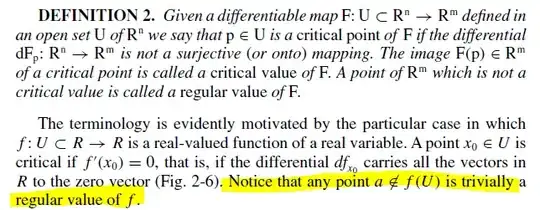Given this definition:
and the following theorem:
This theorem does not mention anything about whether $f$ is injective or not, and the theorem states that if $a \in f(U)$ is a regular value of $f$ , then $f^{-1} (a) $ is a regular surface in space.
But $f^{-1} (a)$ is a set of points such that $f(x,y,z) = a$ , my question is, what if $f$ is injective? Then $f^{-1} (a)$ must be a unique single value, and that single point cannot possibly be a regular surface, so what's wrong with my understanding?

